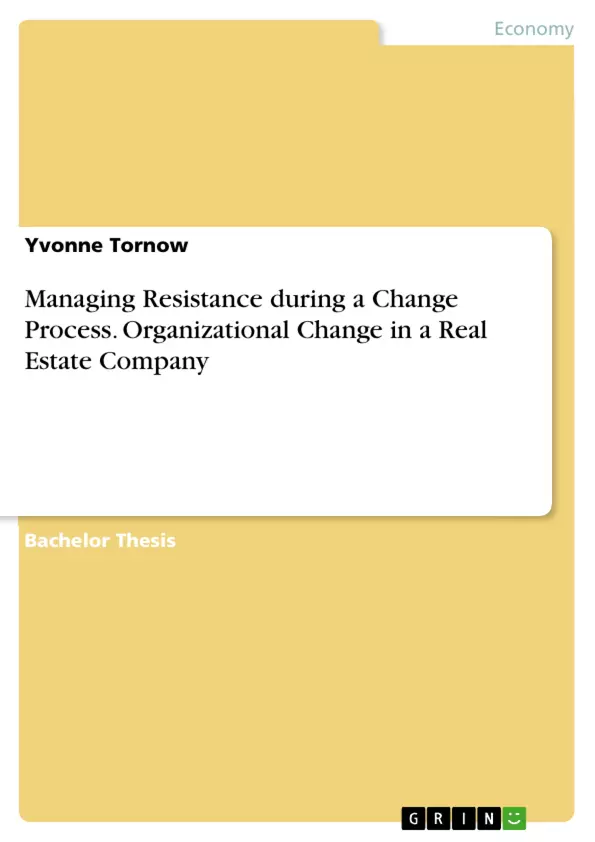In the twenty-first century change and how to lead it successfully has become a critical topic on the minds of organizational leaders. And that for a very good reason: In today’s turbulent environment, things rarely remain the same. Change is happening everywhere. Its speed and complexity are increasing and the future success of organizations depends on how good leaders are at leading change. Some of the major forces contributing to the necessity for change are globalization; open and dynamic market conditions, rapid technological improvement, cultural shifts but also the high expectations of customers.
In comparison to the past, we know much more today about change and how to successfully implement change management. Nevertheless, managers continue to make fundamental mistakes when they are trying to implement change. In too many cases the improvements have been poor with wasted resources and burned-out, scared and frustrated employees and turmoil in the culture of organizations. People are creatures of habit and when they get into a routine, they don’t necessarily want to change for the sake of change – especially when something is taken away from them that they are used to. When confronted with change, the tendency to respond to it is resistance as they often feel insecure about a new situation and may have fears, such as of the unknown, of losing their job or others.
Sustaining change requires fundamental shift of thinking, and effective communication is considered as highly important during a change process. It is the instrument for announcing, explaining and preparing the people involved for both the positive and negative impact of implementing change in order to help people understand the need for change. This can increase the commitment to change as well as avoid confusion among employees.
Inhaltsverzeichnis (Table of Contents)
- Introduction
- Introduction of Topic
- Motivation and Objectives
- Structure
- The Theory of Organizational Change
- The Importance of Organizational Change Management
- Drivers of Change
- Types of Organizational Changes
- Models for Organizational Change
- What is an Organizational Change Model?
- Organizational Change Models - an Overview
- Kotter's 8-Step-Model
- Create a Sense of Urgency
- Form a Powerful Guiding Coalition
- Create a Vision and Strategy for Change
- Communicate the Vision
- Empower Employees for Broad-Based Action
- Create Short-Term Wins
- Consolidate Gains and Produce more Change
- Anchor the Changes in Corporate Culture
- Review of Kotter's Eight-Step-Model
- Resistance to Change
- Definition of Resistance
- Symptoms for Resistance
- What causes negative Behavior
- Overcoming Resistance
- The Role of Leaders in handling Resistance
- Rethinking Resistance
- Buy-out of a Berlin-based Real Estate Company and its consequences
- Company Background
- What have been the Drivers of Change?
- The proposed Solution and the Organizational Change Process
- What Type of Organizational Change has been existent?
- What Mistakes have been made during the Change Process?
- What are the Symptoms for Resistance?
- What is the Motivation for Resistance?
- How can the existing Resistance being managed?
- Implications for future Strategies
Zielsetzung und Themenschwerpunkte (Objectives and Key Themes)
This work provides a comprehensive analysis of organizational change, focusing on the dynamics of resistance and its implications for successful implementation. The author aims to shed light on the theoretical underpinnings of change management, exploring key models and drivers while examining practical challenges in real-world scenarios.
- The Importance of Organizational Change Management
- Drivers of Change
- Types of Organizational Changes
- Resistance to Change
- Overcoming Resistance
Zusammenfassung der Kapitel (Chapter Summaries)
The first chapter introduces the topic of organizational change, outlining its significance and motivations. It provides a framework for the study, outlining its structure and key concepts.
Chapter 2 delves into the theoretical framework of organizational change management, exploring the importance of effective management in navigating change processes. It examines the drivers of change, exploring diverse factors that necessitate organizational adaptation and restructuring. This chapter also dives into different types of organizational changes, classifying them according to their nature and scope. Finally, it examines various models for organizational change, focusing on Kotter's 8-Step-Model and its detailed implementation within the context of successful change initiatives.
Chapter 3 explores the complexities of resistance to change, defining its nature and outlining its potential symptoms. This chapter analyzes the underlying causes of resistance, delving into factors that contribute to negative behaviors and resistance to change initiatives. Furthermore, it proposes strategies for overcoming resistance, examining effective methods for engaging employees and fostering a culture of change. The role of leadership in managing resistance is highlighted, emphasizing the importance of effective communication, empathy, and active engagement in navigating change processes. Finally, the chapter concludes by presenting an alternative perspective on resistance, rethinking its potential as a source of valuable insights and opportunities for positive transformation.
Chapter 4 provides a detailed case study of a Berlin-based real estate company undergoing a buy-out and its subsequent organizational change. The chapter analyzes the company's background, exploring the driving forces behind the acquisition and the resultant organizational change. It examines the proposed solutions and the implementation of the organizational change process, highlighting the specific changes implemented and their impact on the company's structure and operations. This chapter further investigates the type of organizational change implemented, analyzing its nature and scope within the context of the company's specific circumstances.
Schlüsselwörter (Keywords)
Organizational Change Management, Drivers of Change, Types of Organizational Changes, Change Models, Kotter's 8-Step-Model, Resistance to Change, Overcoming Resistance, Leadership in Change, Case Study, Real Estate Company.
- Quote paper
- Yvonne Tornow (Author), 2013, Managing Resistance during a Change Process. Organizational Change in a Real Estate Company, Munich, GRIN Verlag, https://www.grin.com/document/311414



